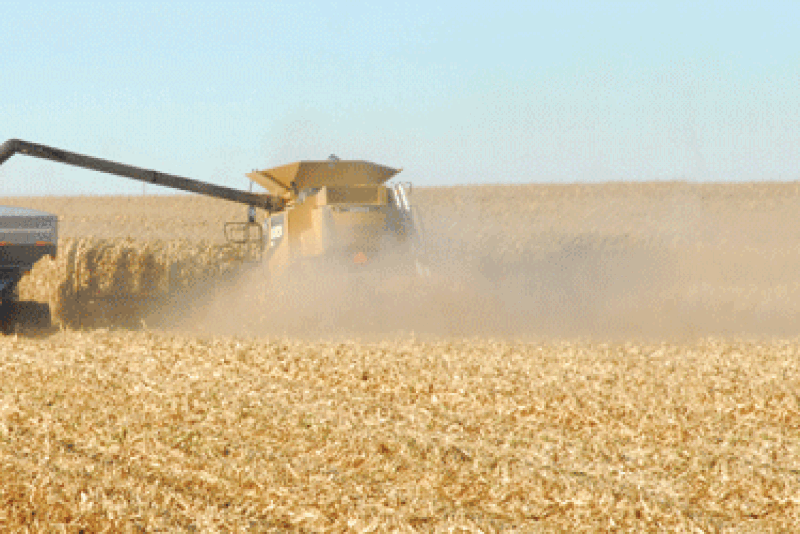The 2024-25 crop year has wrapped up with ending stocks coming in higher than anticipated, largely due to an unexpected drop in feed and residual use in the final quarter of the year, though a bigger than expected 2024 crop played a role in that as well. Demand remained robust in both ethanol and especially in exports in the final quarter of the crop year. Importers actively took advantage of low corn prices, importing corn at a historic pace into the final days of the crop year. Ending stocks totaled 1.533 billion bushels, down from our July forecast of 1.29 billion bushels. The weakness seen in price despite seemingly robust demand says the cash market was not fooled by forecast tight stocks. However, the weakness in price led to continued robust export demand.
The biggest change on the balance sheet for the 2025 crop year since our last update is acres. USDA unexpectedly increased acres in their August report after incorporating FSA acres into their supply assumptions. USDA went on to again increase acres in their September report, putting corn acres at 98.728 million planted acres, the highest in decades. Our yield assumptions have not changed much. While USDA’s estimate has ranged from 188.8 in August to 186.7 in September, our estimate has not changed much. Following the Pro Farmer Crop Tour, we increased our estimate to 182.7 bushels per acre and continue to feel that is a reasonable assumption. With the ongoing U.S. government shutdown, USDA has not released a production estimate since September, though we feel their yield assumptions will be lowered when an updated figure is eventually released, whether that is in the November reports or the Annual Production Summary in January.
Corn demand continues to be record strong. Inspections data that has persisted despite the shutdown continues to indicate demand is strong for spot corn. As does both the spread and cash markets. Our demand assumptions for the 2025-26 crop year has increased alongside the crop size. We now forecast 2025-26 demand at 15.908 billion bushels, a record and up from 15.385 billion in our previous forecast, topping 2024-25 use at 15.122 billion. Exports make up for the bulk of the increase, though use increased in each of the top categories. Relatively low crop prices and robust ethanol demand are expected to keep corn for ethanol use high. Feed use is expected to increase as well. Historically, feed use follows total supply at a ratio between 34% and 36% and is impacted by the quality of the corn crop, availability of alternative feeds and livestock numbers. We are placing 33.4% of total supply into the feed forecast, or 6.013 billion bushels. The sheer size of the crop and limited number of cattle in the U.S. causes us to be hesitant to increase our forecast much above that mark at this juncture.
Ethanol is the next largest use category. Crushers continue to take advantage of low corn prices and healthy crushing margins to operate at capacity. Ethanol use has remained historically high but has dipped modestly since the start of the year amid uncertainty regarding renewable fuel policy. We are forecasting ethanol use stronger from a year ago as actual use will be subject to global energy prices, which have been quite volatile with the ongoing conflicts in the Black Sea and Middle East.
Exports continue to prove robust. While sales data has been nil, inspections continue to pace above the historic pace needed to achieve the current USDA export forecast. Agriculture has a front-row seat on trade and several of the deals made in the last several months have row-crops written in the deal. That will help keep exports running strong throughout the marketing year. Our export forecast is 2.95 billion bushels, up from our previous forecast of 2.6 billion and above last year at 2.835 billion.
Ending stocks project to 2.1 billion bushels. Our previous forecast was 1.76 billion. Higher acres was the big differentiator between the two, but higher beginning stocks contributed to the shift as well. The stocks-to-use ratio projects to 13.2%, above average and above 10.1% in 2024-25. Farm level cash prices are projected to average $4.35, modestly above last year.
In our long-range forecasts, corn plants are seen as falling steadily to near 90 million acres. That would be similar to 2013 to 2020 when planting average about 90 million acres after coming off years when prices were higher. Relatively lower prices is likely to discourage producers from planting as many acres as possible, particularly in “fringe acres” that are less productive. Soybeans are seen as taking a higher share of acres as demand has proven robust and continues to grow domestically. Acres are seen as falling to 94.0 million acres in 2026, well below this year but above our prior forecast of 90.0 million.
Trend yield forecast continue to be more conservative than those made by USDA analysts who project the 2028/29 corn yield to 189.0 bushels compared to our forecast of 185.0 bushels per acre. This year has effectively broken the “yield ceiling” that had plagued the prior decade. Corn yields look to overcome the 180.0 bushels per acre mark for the first time.




